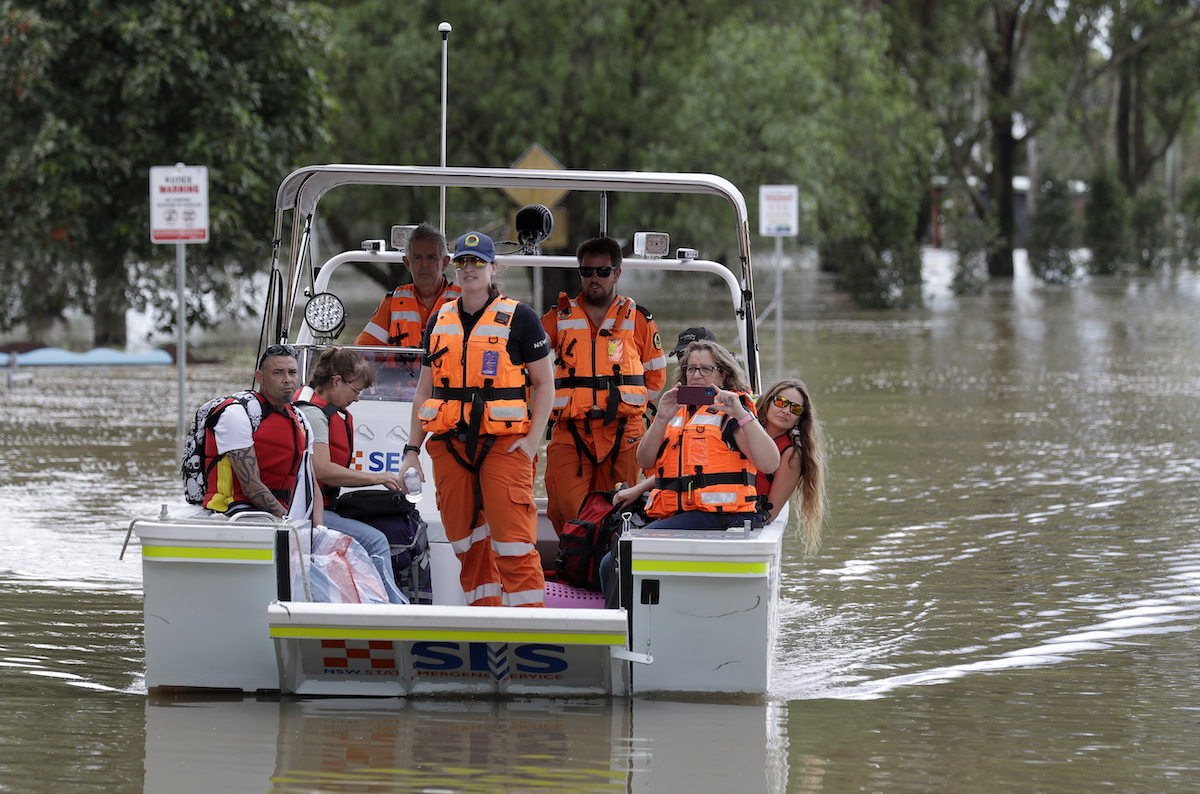A little over a year after wildfires devastated the country, torrential rain led to Australia’s worst flooding in nearly 60 years, according to Al Jazeera.
NPR reported approximately 40,000 people have been forced to evacuate and at least two people have died due to the flooding.
When the Warragamba Dam, which provides much of the drinking water for Sydney, overflowed for the first time in five years on March 20, people predicted record-breaking flooding to occur.
“Major flooding is occurring along the Hawkesbury River at North Richmond where the river level is rising. Flooding is likely to be higher than any floods since Nov 1961,” New South Wales (NSW) Emergency Services wrote in a tweet.
“It is one of the biggest floods we are likely to see for a very long time,” Bureau of Meteorology Flood Operations Manager Justin Robinson said.
20 inches of rain fell in one day in one area of Queensland, according to the Australian government. In coastal areas of NSW, daily rainfall exceeded 3.9 inches.
The flooding subjected approximately 40% of Australia’s population and 25 million acres of land to weather warnings, according to Reuters.
On March 20, a disaster was declared in 16 local government areas of NSW. By March 24, it was declared in 47 of the 128 areas. The declarations allow people in the areas to apply for emergency funds for damages caused by the flooding.
“This is a serious event with heavy rainfall, severe winds and widespread flooding, resulting in a high number of flood rescues, damage to roads and properties and a large scale, multi-agency response led by the NSW SES,” said Minister for Agriculture, Drought and Emergency Management David Littleproud.
“Through the [Disaster Recovery Funding Arrangements], a range of practical assistance measures are now available to help people get back on their feet and help councils get on with the clean-up and repairs to infrastructure.”
As of March 22, 2,527 claims were approved and as of March 23, over 10,000 payments were made by the Australian government.
“10,287 payments of $1000 for adults and $400 for children, totalling $13.5m, have been made by the Federal Government to date to support people affected by flooding. In most cases those payments are being paid within an hour of making a claim,” wrote Australian Prime Minister Scott Morrison on Twitter.
As the water level rose, humans were not the only ones searching for dry land.
“I grew up here on the farm so I have always been around snakes, spiders and all the other animals so they don’t bother me and usually we don’t cross paths too often, but when the flood comes they have to find somewhere to get dry,” said Matt Lovenfosse, a resident of NSW. “The trees are full of snakes. If you take the boat out over the paddock they swim towards it trying to get on something dry, same with the spiders.”
Mice were also seen in large quantities fleeing the floods. According to BBC, locals from Gilgandra, NSW called it “their worst mouse infestation in decades” as a video from the area showed hundreds of mice at a farm.
Australia and its inhabitants are no stranger to weather extremes and natural disasters.
“These events are expected,” said Sarah Perkins-Kirkpatrick, a climate scientist at the University of New South Wales, according to AP News. “But climate change has put them on steroids.”
According to BBC, NSW Premier Gladys Berejiklian said that much of the land areas affected by the flooding were also affected by the wildfires last summer.
“I think it’s because they’ve just got their strength back from the fires. It’s hard to fight back from that, and now this one’s hitting them even harder,” said Lisa Farrawell, a NSW resident who was trapped for hours due to the wildfires.
“I don’t know any time in state history where we have had these extreme weather conditions in such quick succession in the middle of a pandemic,” Berejiklian said.
According to AP News, Rob Costigan, a farm owner just north of Sydney spent days during the wildfires of 2019 and 2020 stomping out embers and running his sprinklers to save his home from burning before the recent floods lifted and destroyed his home.
“Just disbelief,” Costigan said. “It feels like the world’s against us. You work your guts out and then to have it all just washed away in the blink of an eye.”
Despite the setbacks, Costigan remains hopeful for the future.
“The fire and the drought haven’t beaten us and we’re slowly getting through this pandemic,” Costigan said. “This isn’t going to stop me from moving forward.”
